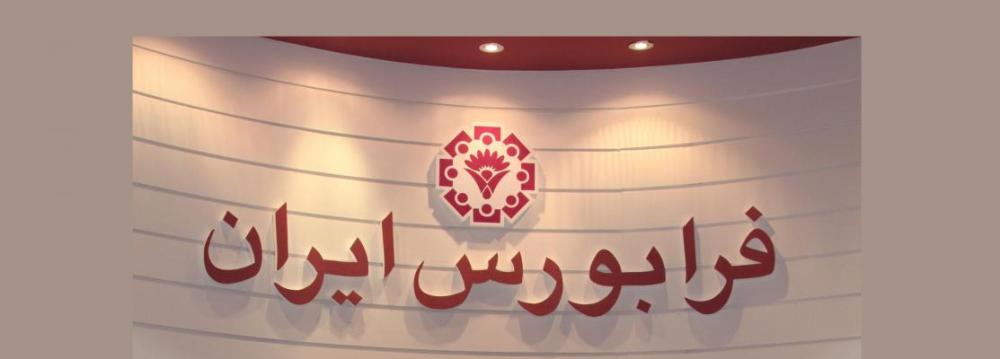Iran Fara Bourse is sometimes seen as a second-rate market in Iran. Its name garners less respect and recognition from politicians and the media than its older brother, Tehran Stock Exchange.
Whenever “bourse” is mentioned in Iran, TSE is the subject, not IFB. But this underdog is growing fast and is bent on overtaking TSE as Iran’s top securities exchange.
“Iran Fara Bourse market has introduced a large assortment of instruments and markets to Iran’s capital markets to diversify financial instruments available to the Iranian public and its capitalization is over $23 billion,” said IFB’s chief executive, Amir Hamouni.
Of course a $23 billion valuation of the IFB accounts for all its trading floors or as Hamouni calls them, “markets”. These include two boards that list stocks: one for financial instruments and another for mergers and acquisitions and large volume transactions along with initial offerings.
However, when we consider the capitalization of the stocks listed on the exchange’s boards that affect its main index, the IFX, its size drops to 468.1 trillion rials ($12.78 billion at market exchange rate).
That makes IFB a sixth of the illustrious TSE, based on the same criteria. TSE’s market capitalization stood at 2.7 quadrillion rials ($73.77 billion) on Saturday’s close. But we must also consider that IFB started working in 2009, while the TSE is almost half a century old and, after a closedown in its history, it has ran uninterrupted since 1989.
Fixed-Income Securities
But the IFB’s ace in the hole is its more welcoming stance toward bonds and other financial instruments. Although the TSE is also listing bonds, its repertoire comes second to IFB. The TSE lists 10 bonds these days while the IFB hosts 29 bonds and 24 housing loan securities.
Unlike developed countries, bonds are new to Iran’s financial system. As usury is illegal in Iran, novel solutions have had to be formulated to allow Sharia-compliant versions to emerge. The market for them is expanding rapidly.
Of the 14 ypes of Sharia-compliant bonds, four are in use in Iran; two of them have been introduced in the past two years.
In this market, which usually outgrows stocks in size, the IFB is acting faster and has taken the lead. Growth in bond trading alone can make IFB the largest securities exchange in Iran.
The openness is not just for bonds. Of Iran’s 15 exchange-traded funds, 11 have opted to list on the IFB rather than the more prestigious TSE.
ETFs are marketable securities that track an index, a commodity, bonds, or a basket of assets like an index fund. Their oldest in Iran has not reached its anniversary, and only one, Firouze’s top 30, has been pitched to foreign investors.
The exchange works with nine investment banks and 99 brokerage companies that have 1,500 offices around Iran, according to Hamouni.
And recently the market has been dominated by big time players: 80% of buying and 82% of selling in the current Iranian year (started March 21) was carried out by institutional investors. Also, around 70% of trading were done by majority stake holders, mainly coming from mergers and acquisitions.
Penchant for Innovation
IFB is not just looking for convention. Apart from running a market for intellectual property, it is now looking to list small and medium companies that make up 16% of Iran’s gross domestic product and employ 45% of the population, according to statistics by Hamouni.
“Small and medium knowledge-based companies want to enter IFB, but don’t really discern between being listed on the main board or the second trading board,” said Hamouni, who said he is following the move personally.
“So far, directions for offering, trading, punishment and disclosure of information [of small and medium companies] have been designed and sent to the Securities and Exchange Organization, and the market will start working soon.”
Listing these firms is not an easy job. For one thing, most small companies “don’t have clear financial records”. So the IFB is working to train their top executives in cooperation with Iran Financial Center–an education outfit. Secondly, trading their risky shares will be limited to professional investors, according to Hamouni.
Certainly, there is still a long way to go for the IFB and the TSE is not sitting still and letting its crown be taken by its little brother.
Both markets are expanding and the TSE has more government support, but IFB’s more flexible structure allows for faster adoption of new instruments and infrastructure.
Whichever you bet on, the cordial relationship between the two exchanges may melt away in the coming years as competition between them heats up, unless they are run like government companies.


